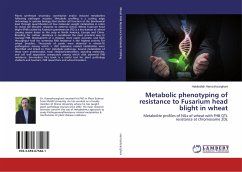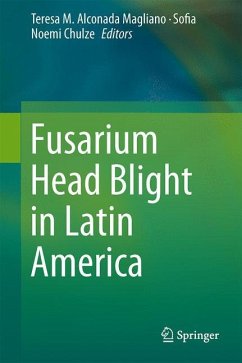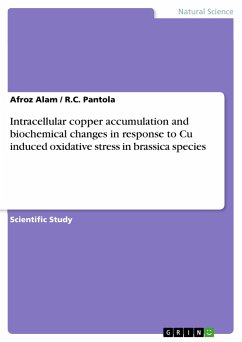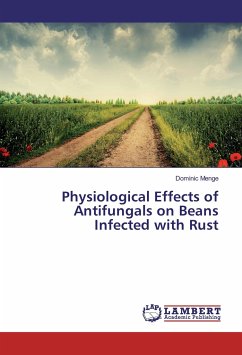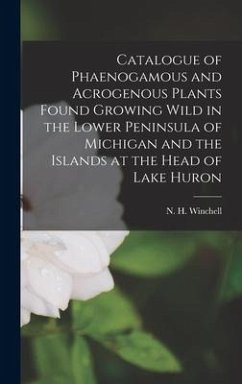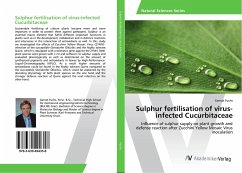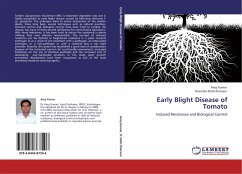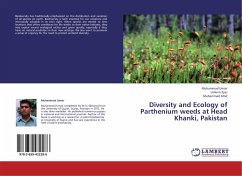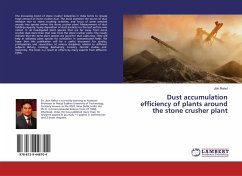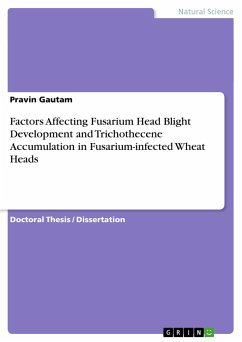
Factors Affecting Fusarium Head Blight Development and Trichothecene Accumulation in Fusarium-infected Wheat Heads
Versandkostenfrei!
Versandfertig in 1-2 Wochen
52,95 €
inkl. MwSt.

PAYBACK Punkte
0 °P sammeln!
Doctoral Thesis / Dissertation from the year 2010 in the subject Biology - Botany, grade: none, University of Minnesota - Twin Cities, language: English, abstract: Fusarium head blight caused by Fusarium graminearum Schwabe is an economically important disease as it results in yield and quality losses of infected grain and the accumulation of mycotoxins produced by the invading fungus. Though it is well established that moisture around the anthesis period promotes FHB development and trichothecene accumulation, the role of moisture from anthesis to harvest has been largely overlooked. The obje...
Doctoral Thesis / Dissertation from the year 2010 in the subject Biology - Botany, grade: none, University of Minnesota - Twin Cities, language: English, abstract: Fusarium head blight caused by Fusarium graminearum Schwabe is an economically important disease as it results in yield and quality losses of infected grain and the accumulation of mycotoxins produced by the invading fungus. Though it is well established that moisture around the anthesis period promotes FHB development and trichothecene accumulation, the role of moisture from anthesis to harvest has been largely overlooked. The objective of this study was to examine the influence of environmental factors, especially moisture, host resistance, and pathogen variation on infection, FHB disease development and mycotoxin production and accumulation in planta. The split-split-plot Field experiments were conducted in 2006-2008. Main plots were the duration of mist-irrigation after inoculation. Three wheat cultivars used as sub-plots were Alsen, 2375 and Wheaton. Sub-sub-plots were F. graminearum isolates. Plots were inoculated twice, at anthesis. FHB severity was assessed 21 dai. Visually scabby kernels, deoxynivalenol, 15-acetyldeoxynivalenol, 3-acetyldeoxynivalenol and nivalenol were determined on grain harvested at maturity. Additionally, in 2007 and 2008, whole heads were sampled at 0, 7, 11, 14, 21, 28 and 41 dai analyzed for mycotoxins. Severity, VSK and the DON concentration of mature grain, were significantly higher in the susceptible wheat cultivar Wheaton than in the other two cultivars examined. Although FHB severities were not significantly different in plots receiving different durations of mist irrigation ,VSK were significantly lower in the treatments receiving the least amount of mist-irrigation than for treatments receiving mist-irrigation for longer periods, suggesting that extended periods of moisture promote disease development. DON was however significantly lower in the longest misting treatment than those treatments receiving less water. In the whole head samples, DON and other trichothecene either declined with increased durations of mist-irrigation or remained low while water was being applied by the misting system. However, trichothecene accumulation was observed to increase after the cessation of mist-irrigation. Our results suggest that longer durations of moisture after inoculation may increase the FHB severity and VSK, although DON and other trichothecene concentrations may be concomitantly reduced. Leaching may explain the reduction of DON observed in extended misting duration treatments.



